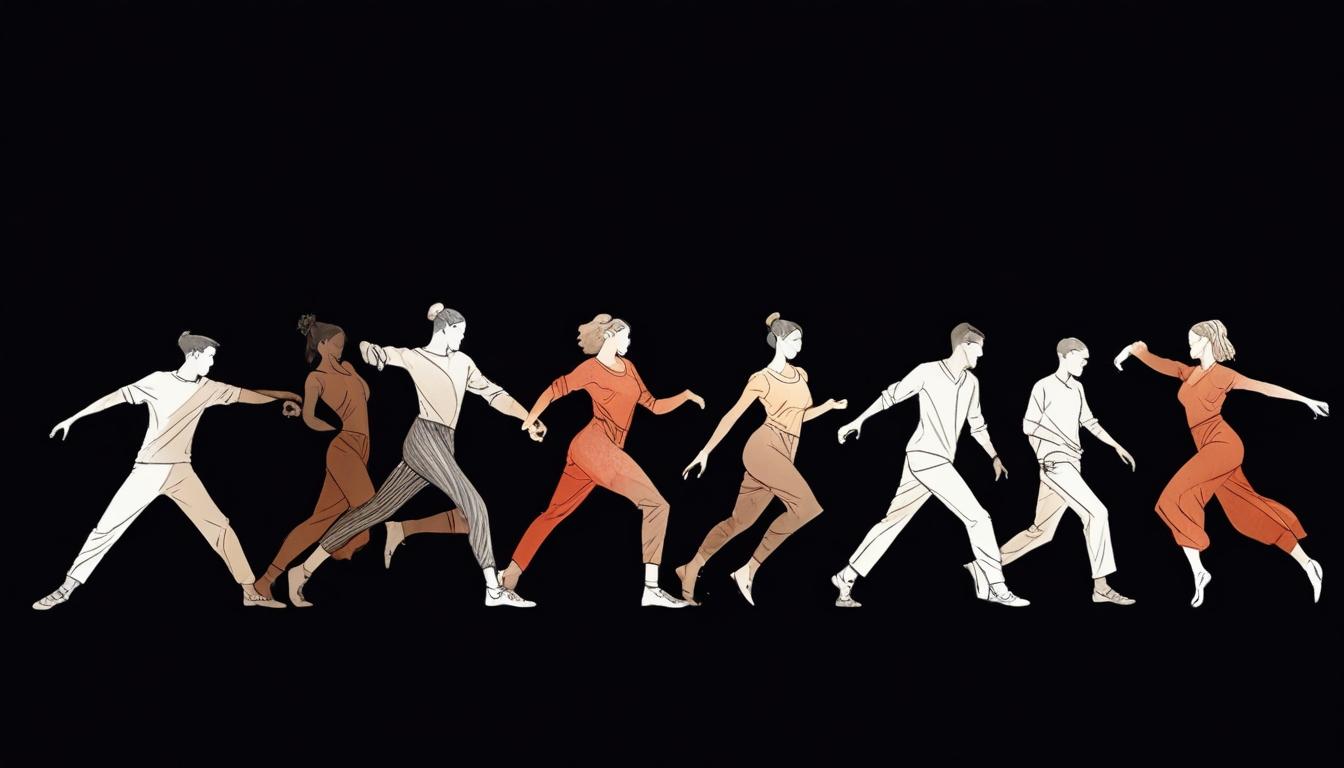German choreographer Sasha Waltz’s 2021 creation, a contemporary dance piece set to Terry Riley’s seminal 1964 minimalist music composition In C, was recently showcased at the Southbank Centre’s Multitudes festival in London. The performance featured the London Sinfonietta providing the musical backdrop, illustrating a fascinating collaboration between music and movement.
In C, composed by Terry Riley—who was known for his interest in psychedelia and consciousness alteration during the 1960s—consists of 53 distinct musical cells or riffs that performers can repeat as often as they choose on any combination of instruments. This composition is noted for its rhythmic repetition, continuous momentum, and intricate layering, elements that have notably attracted choreographers exploring minimalist music for dance, including Lucinda Childs and Anne Teresa de Keersmaeker.
Sasha Waltz’s adaptation of In C transforms the music’s structure into a “movement score” consisting of 53 figures accompanied by a set of rules, resulting in a structured improvisation. Since its creation, Waltz’s choreography has been performed with a variety of professional and amateur dancers, each incarnation embodying a unique permutation of the work. Waltz devised this piece with an intention to explore themes of communal structure, democracy, and individual agency within a group.
The company of dancers participating in the performance presented an array of ages and physiques, exhibiting striking movement qualities. Throughout the piece, small, elemental gestures such as a shoulder shrug, a head turn, or a simple arm sweep served as the foundational atoms of the choreography. These motifs emerged, evolved, and dissipated in a way that mirrored the musical composition’s layering and repetition. The dancers formed groups that continuously shifted, with individuals breaking away to follow new directions, demonstrating a considerable demand on stamina.
The choreography begins with an open posture, wide angles, and a light, bright energy. As the hour-long performance progresses, the movement qualities diversify, alternating between purposeful unity and moments that appeared more aimless. Brief episodes of unison provided bursts of energy, maintaining a controlled atmosphere even as the performance unfolded into a deliberate unraveling. At times, dancers lay down or spilled off the stage, expressions shifting from composure to fractured smiles.
One poignant moment featured dancer Jaan Männima encountering another performer face to face. They suddenly moved in synchrony, resulting in a spontaneous smile reflecting elation, relief, or solidarity. This interaction brought a human dimension into view, transcending the choreographic algorithm to reveal the community in dynamic action.
The Guardian is reporting that Waltz’s In C is a considerable creative undertaking, fusing minimalist music with contemporary dance to explore complex social themes through a layered, improvised framework that evolves in real-time both musically and choreographically. It stands as a vivid example of the interplay between music, movement, and communal expression in modern performance art.
Source: Noah Wire Services
